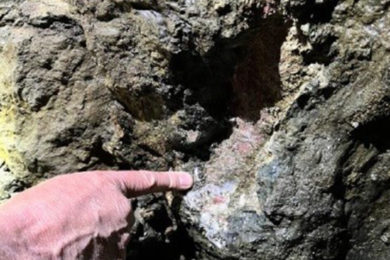AEL Mining Services, a manufacturer of electronic detonators, and its joint venture subsidiary DetNet have developed a blast optimisation tool that offers users key features such as precision timing, pre-blast fault identification and rectification ability, as well as improved safety and security. “Intrinsic to the design of the detonators is the over-riding safety factor which minimises the risk of accidental initiation, allowing access to people with encrypted codes to initiate the detonators,” says Carlos Goncalves, Product Manager – AEL Mining Services electronic initiating systems.
According to Goncalves, AEL’s electronic detonators are robust and suitable for use in the toughest environments. “Today we are excited to announce three of the products – Quick Shot, DigiShot and DigiShot Plus – that we are focusing on to showcase our innovations in electronic detonating technology.”
Electronic detonators provide numerous benefits including; accuracy of firing times, cost effectiveness, improved overall cycle times, reduction in environmental impact, fine tuned blasting to suit any operational requirement, increased productivity and the ability to reduce secondary breakage costs.
“Operations that have adopted electronic initiating systems are reporting downstream and upstream benefits including improved and consistent fragmentation; controlled muckpile profile and placement; excavation profile and stability improvements; reduced mining costs and safety risks,” says Goncalves.
AEL has deployed electronic initiating systems in many surface and underground applications. From 2007 to 2009, the Gautrain Rapid Rail project’s 15 km underground tunnels were excavated under sensitive, built-up areas in Johannesburg. AEL’s QuickShot electronic detonator system was used to achieve maximum advance rates as well as adhering to environmental restrictions. Blasting was performed without incurring damage to sensitive structures on surface with Positive Prescriptive Value (PPV) levels well under the target maximum of 10 mm/s.
Another example of an operation adopting electronic delay detonators is Ngezi open-pit mine in Zimbabwe. Ngezi – the first mine to use electronic detonators in Zimbabwe – wanted to optimise the mining processing value chain.
“With our rigorously trained engineers, the mining industry wishing to convert to electronic detonators will gain comprehensive assistance in selecting systems that suit their particular applications, be it for underground or surface. In addition, our Mining Optimisation team will provide ongoing support, training and a range of software tools to assist the successful deployment,” adds Goncalves.
AEL is targeting regions including South Africa, Botswana, Ghana, Zambia and DRC, South America and Europe, the latter under its joint partnership agreements.








